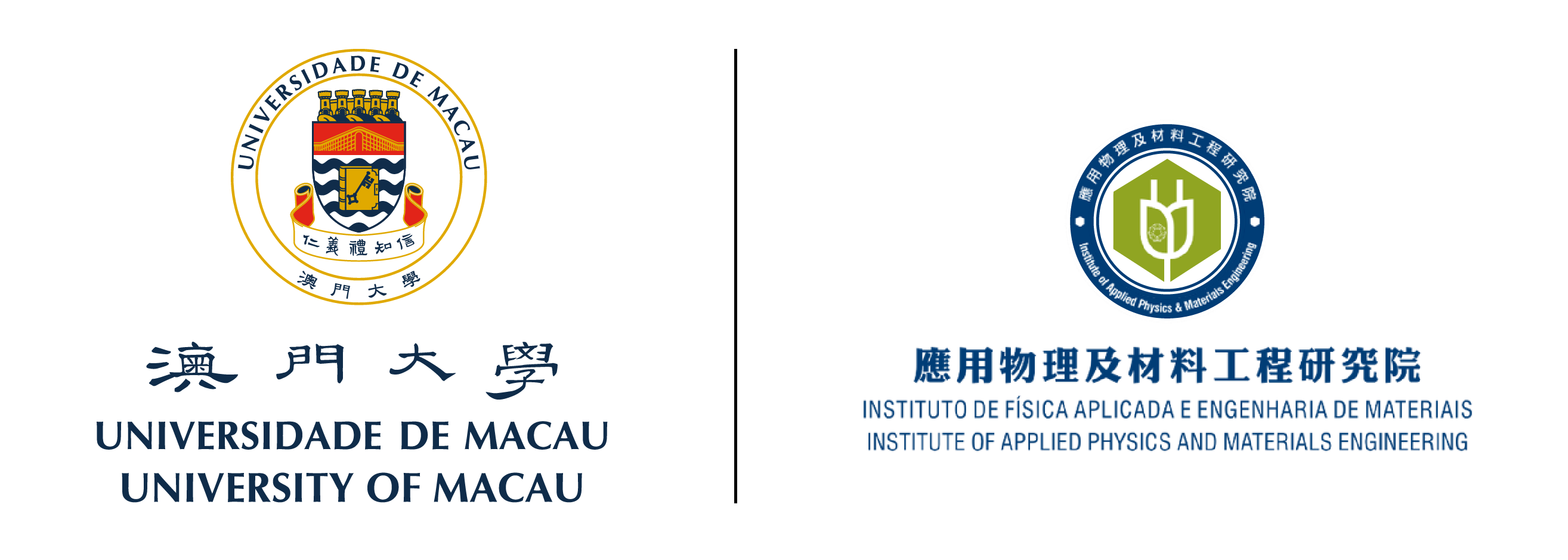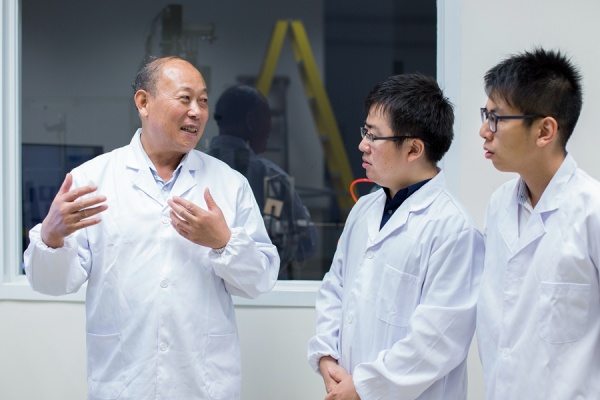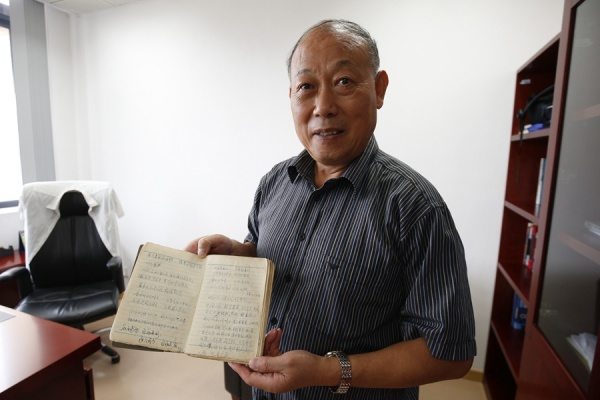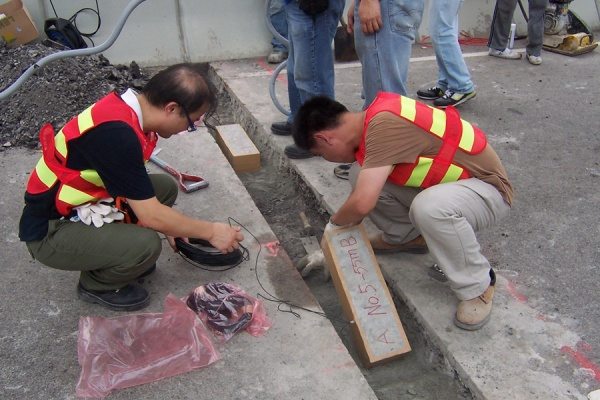Building the tallest structures, the saying goes, begins with the base. To Prof Li Zongjin, chair professor at the University of Macau’s (UM) Institute of Applied Physics and Materials Engineering (IAPME) and winner earlier this year of the Arthur R Anderson Medal from the American Concrete Institute, the base is basically composed of an important material—concrete.
The Arthur R Anderson Medal recognizes Prof Li for his triple global contributions to infrastructure, teaching, and research. The first Chinese scientist to be so honoured since the award was established 45 years ago, this preeminent concrete expert is admired by peers and inspires the younger generation. His humble beginnings saw him toil as a brickmaker and farm hand. How did he then reinvent himself to become a world-class scientist? The ‘secret’ to his success is simple yet prosaic: ‘I merely work when other people are drinking coffee.’
萬丈高樓從地起,再高的大樓都離不開一樣重要的材料──混凝土。今年獲美國混凝土學會頒授科研終身成就獎「亞瑟.安德森獎章」的澳門大學應用物理及材料工程研究所講座教授李宗津,年輕時曾做過製磚和農務工作,後來卻走上科學之路,成為世界級混凝土專家。李教授總結他的成功之道時說:「我只是把別人喝咖啡的時間都用在工作上。」
李宗津教授是「亞瑟.安德森獎章」設立45 年以來第一位獲此殊榮的中國科學家,表彰他為世界各地基建、教學和研究上作出的卓越貢獻。作為世界最頂尖的混凝土專家,李教授的成長經歷值得晚輩學習,同輩敬佩。
Prof Li Zongjin is the first Chinese scientist to receive the Arthur R Anderson Medal
李宗津教授為首位獲頒美國亞瑟·安德森獎章的中國科學家
When Li was in middle school, a cataclysmic event turned China upside down and upended millions of lives across the country. That defining event is the Cultural Revolution. His formal education ended prematurely, Li was forced to fend for himself; he was first thrust for two and a half years into a demanding job as a farmer, and then moved into a brickmaking factory that belonged to an iron mine. But somehow, he turned this adversity into advantage; it marked the beginning of his self-education. Li was inspired by China’s iconic writer Lu Xun, who, when told he was a genius, famously replied, ‘There is no such thing as a genius. I merely work when others are drinking coffee’. He devoted all his precious hours after a gruelling day’s work in the mine to reading borrowed books, while his co-workers busied themselves playing poker. ‘If you aspire to achievement, you must work harder than others. Only then can you seize the opportunities when they present themselves,’ he says.
李教授初中時遇上文革,沒法接受正規教育,先是上山下鄉,在農村做了兩年半農務工作,後來又到礦場的磚瓦廠製作磚瓦,但他受魯迅「我只是把別人喝咖啡的時間都用在工作上」的態度影響,在勞碌的礦場工作後,把別的礦工用來打牌的時間全部用來閱讀借回來的書籍,「想要做出成就,就要比別人有更多付出和努力,當機會出現時才能緊緊把握在手中。」
Prof Li Zongjin likes to pass on his knowledge and experience to his students
李宗津教授樂於指導晚輩
An opportunity eventually came knocking, and seize it he did. In 1977, the National College Entrance Exam was reinstated in China. Having never stopped his self-education during the wilderness years, Li now had a clear, reachable goal in mind—entering college and making up for lost time. During those difficult years, he developed the habit of collecting and internalising famous sayings by famous people. When he received a life-changing offer from Zhejiang University the following year, he was moved to quote one of his favourite aphorisms: ‘Hard work makes a beautiful life possible.’
李教授年輕時有收集名人金句的習慣,尤其是當他在面對生活的困難,這些佳句往往能幫他渡過困境,其中一句他最喜歡的金句就是「勤奮成就生活之美」。因為努力不懈的學習,當國家在1977 年恢復高考後,他於1978 年考上了浙江大學,之後讓他人生出現翻天覆地的改變。
Foreseeing the Potential in Concrete Research
看到混凝土的研究機遇
The hardships Li endured in his youth cultivated his perseverance and resilience. Whether at Zhejiang University or Northwestern University in the United States, Li was always the most hardworking student. During those days, he made an important discovery that would later shape his career trajectory. He noticed that concrete was the most widely-used building material in the world, and yet nobody seemed to realise the importance of research in the field. ‘The per capita consumption of concrete is at least 2,500 to 3,000 kilograms a year worldwide, which is more than the per capital annual consumption of grains,’ he says. ‘But because concrete is easy to get, it is rarely treated with the importance it deserves.’ Foreseeing great potential in concrete research, Li began to study ways to improve the performance of concrete at a lower cost. According to Li, scientists have a far better understanding of metal materials than concrete, because concrete is a composite material that is structurally more complicated than metals.
李教授在年輕時吃了很多苦,培養出堅毅不拔的精神。他由進入浙江大學,到後來赴美國西北大學做研究生時都比別人更能吃苦。求學期間,李教授發現混凝土作為世界上應用最廣,使用量最大的建築物材料,卻沒有人重視混凝土研究的重要性,「全世界每人一年最少消耗2500 到3000 公斤混凝土,這個消耗量比我們消耗的糧食更多。由於混凝土得來太容易,很少受到注視。」李教授看到這項研究的發展空間,因而埋首苦幹研究如何把混凝土的性能做得更好同時降低造價,他指出混凝土是一種複合材料,比一般金屬材料結構更複雜,人類對金屬材料的研究和認識遠比混凝土多。
Prof Li has kept this notebook for many years. He liked to collect famous quotes in his youth for self-motivation.
李宗津教授收藏多年的筆記本,內裡收錄名人金句。
In 2009, Li was appointed by the Ministry of Science and Technology of China as the sole chief scientist for a concrete research project under the national 973 programme. He was given a challenging task: developing a modern version of concrete that is environmentally friendly but also more flexible and durable.
He and his team rose to the challenge and successfully developed a new technology, which has been used in numerous construction projects in China, including the high speed railway track between Beijing and Shanghai, Tianwan Nuclear Power Plant, and the Taizhou and Chongqi Bridges.
Having devoted half his life to concrete research, Prof Li says that one distinguishing feature of concrete is the great variance in the scale of measurement. ‘To understand the structure of steel or iron, normally all you have to do is observe the atomic structure, but when it comes to concrete, the variance in the scale of measurement is so great. We are talking about ten to the 14th power, from observing the products from concrete hydration using nano technology to monitoring bridges of several kilometres,’ he says. ‘By understanding products generated from concrete hydration using nano science, we can improve the micro-structure of concrete by artificially adding organic or inorganic nano-particles to make their macro-performance comply with our requirements, such as increasing a structure’s flexural strength or toughness.’
2009 年,李教授獲國家科技部委任成為「973 計劃」中唯一一位混凝土研究專案的首席科學家,研究出符合環保原則,但韌性與耐久性高的現代混凝土,其研究團隊研發的混凝土技術在京滬高鐵、田灣核電站、泰州大橋、崇啟大橋等工程項目均得到應用。
研究混凝土大半生,李教授形容混凝土的特別之處在於研究尺度的跨度非常大:「要瞭解鋼鐵的建構,一般情況下觀察其原子排列就可以,但混凝土的研究尺度跨度約有10 的14 次方,從納米的水化產物觀察到數公里長的大橋監測。我們通過納米科學對水化產物的認知,可以在納米的尺度上有意識地改進混凝土的特質,透過人為的方式加入有機或無機的納米顆粒,在非常小的尺度改進混凝土的微結構,使它的宏觀性能符合我們要求,例如增加結構的抗彎、抗衝擊性能。」
Currently, Prof Li is working with assistant professor Sun Guoxing from the IAPME and they have achieved some encouraging results. For example, by adding 5-nm inorganic particles in organic hydrogels, they successfully developed hydrogels with the best all-round performance in the world. Also, by adding organic or inorganic particles in concrete, they successfully increased the flexural strength of concrete by three times without lowering the compressive strength.
李教授現時與應用物理及材料工程研究所助理教授孫國星所做的研究,通過納米技術,對有機材料水凝膠加入5 納米大小的無機顆粒,可以做出世界上綜合性能最好的水凝膠。同時間,他們利用一些有機或無機的顆粒應用到混凝土中,可以讓抗壓強度不變的情況下,使混凝土的抗彎強度提高三倍。
Cross-disciplinary Collaboration
把不同學科交叉結合
Prof Li credits his accomplishments in concrete research to the guidance of Prof S P Shah, his master’s and PhD supervisor while he was studying at Northwestern University in the US. Prof Shah opened Li’s eyes to what could be achieved with cross-disciplinary collaboration. ‘When I was in the US, I noticed that students involved in concrete research were not just from the civil engineering department; some of them also came from other departments, such as chemistry, physics, and materials engineering,’ he says. ‘Having members from different backgrounds could help the team approach the subject of research from different angles, with different kinds of expertise. Later, when I was trying to establish my own team, I adopted this cross-disciplinary approach.’
Li also adopts the cross-disciplinary approach when recruiting students. ‘We would look at the overlaps between different disciplines,’ he says. ‘We used to say that the inside knowledge of a discipline is like Greek to outsiders. But now we try to bring people from different disciplines together so they can exchange ideas based on their own expertise, and the results have been very good.’ He cites an example to illustrate his point. Earlier, his team needed to develop a piece of software to better control the experiment equipment, which would have been very difficult for civil engineering students. But with the help of students from the electronic engineering department, they developed the software in a very short time, which expedited the progress of the research study with good results. ‘ If we only study concrete from the perspective of civil engineering or materials engineering, we would be limiting the applications of concrete. Cross-disciplinary collaboration, on the other hand, opens our mind and lets us see all kinds of possibilities,’ he says.
在研究混凝土上作出卓越建樹,李教授感謝當年在美國西北大學碩士及博士的指導老師S.P. Shah教授。李教授當年在導師的帶領下看到不一樣的視野,「在美國時受到啟發,看到當時不只有木土系的學生做混凝土研究,也有化學系、物理系、材料學系的學生參與,讓研究團隊可以在不同的角度與專業領域下對待研究課題。後來我就把這個建立團隊的模式應用到自己的研究中。」
「招收學生時我們注意到不同學科的交叉,以前會隔行如隔山,現在我把各個山頭都拉成一塊,在各自的基礎上進行交流,發現效果非常好,例如我們原本要開發一套軟件應用到實驗上,如果由我們土木背景的人來開發就會非常吃力,但有了電子系的學生,很快就把軟件發展起來,讓研究進度快了很多。如果我只站在木土工程材料的角度去研究混凝土,很難去擴展混凝土的應用範圍,但我與不同學科交叉起來,視野就大大開闊,研究空間也就大大擴充。
Seeing Opportunities at UM
看到澳大的機遇
Prof Li has worked at the Hong Kong University of Science and Technology (HKUST) for 22 years. Formerly the associate dean of the School of Engineering at HKUST, he is currently a chair professor in the IAPME at UM. ‘UM’s rapid progress in recent years has attracted experts and scholars from around the world, which is similar to what happened to HKUST when I first joined it. So I saw the great potential of UM, and decided to come here.’
李教授在香港科技大學工作了22 年,曾任港科大工學院副院長,現任澳大應用物理及材料工程研究所講座教授,李教授說:「我看到這些年來澳大的發展迅速,吸引了來自世界各地的專家學者,這個情境就像我剛到港科大的時候。在這個環境下,我看到澳大會有很大的發展空間,所以就加入澳大。」
Developing a New Type of Wind Turbines
研發新型風力發電機
Currently, Prof Li is working on a cross-disciplinary research project: a new type of wind turbine which he hopes can be set up on the UM campus. ‘Macao is blessed with excellent wind resources, and I hope to take full advantage of the resources to develop a new type of wind turbine for the new campus,’ he says. His team is working to develop a 1000-watt floating wind turbine, with a blade-to-blade distance of 3.2 metres. Unlike the old-fashioned tower-based wind turbines, the floating wind turbine was designed based on the Archimedes Law, with the buoyancy of the liquid supporting the vertical load of the wind turbine. To put it simply, it is like placing the wind turbine on the surface of the water to reduce the resistance from the turning of the blades as well as the wear and tear of the parts. What’s more, the blades can be made from concrete.
李教授現時在澳大正進行一項跨領域的研究,他說:「澳門的風力資源不錯,我希望充分利用這個資源,研發出新型的風力發電機並設立在校園中。我們現在正研發一部功率約1000 瓦,葉片與葉片的距離約3.2 米的水浮式風力發電機,這座水浮式風力發電機有別於傳統塔式風力發電機,設計是利用阿基米德定律,用液體浮力來支撐風力發電機的垂直重量,簡單說就像把風車平放在水面上,從而減少葉片轉動時的阻力,也減少機件的磨損,而當中的葉片更可以用混凝土製造。」
A model of the floating wind turbine
水浮式風力發電機實驗模型
If successful, the wind turbine will be able to generate between 4,000 and 5,000 kilowatt hours of electricity every year, enough to satisfy the need of a small office. Speaking of future research plans, Prof Li says excitedly, ‘We hope to attract investments from businesses and give our students an opportunity to deepen their research and develop a large-sized wind turbine that can generate more power.’
他形容實驗樣機如果成功組建,一年可以產生4000 到5000 度電,足夠一個小型辦公室的照明需要。李教授談到未來研究計劃時,興奮地說:「未來希望得到企業投資,讓參與研究的學生與企業結合,深化研發,做一台發電功率更大的風力發電機。」
The cement-based piezoelectric sensors can be used to monitor traffic flow, vehicle speed, and vehicle weight
水泥基的壓電傳感器,可監測汽車流量、行車速度和車重。
Contributing to the Development of a Smart City with New Research
新研究為智慧城市作貢獻
To support the Macao SAR government’s goal to develop Macao into a smart city, UM is preparing for the establishment of a third state key laboratory for big data research. Prof Li is part of the team. He and his colleagues are now studying the application of cement-based piezoelectric sensors in traffic control. ‘It is similar to the touchscreen of a mobile phone,’ he says. ‘The idea is that when a vehicle passes through a road installed with cement-based piezoelectric sensors, it would generate electric charges on the surface of the sensors. By collecting the data, we could calculate the traffic flow, vehicle speed, and vehicle weight. If we consolidate these data and establish an internet of things, we would be able to realize real-time traffic monitoring, thus contributing to creating a smart city in Macao.’
另外,為了配合特區政府推動澳門智慧城市發展的施政目標,澳大現正籌備第三個國家重點實驗室,開展大數據研究,李教授正參與其中,利用水泥基的壓電傳感器作交通監管。「原理類似手機觸控熒幕,當有車輛經過裝有壓電傳感器的馬路,傳感器表面會產生電荷,通過收集這些信息便可以計算出馬路上的汽車流量、行車速度和汽車重量,透過收集和整合這些數據組成物聯網,便可實時監測交通狀況,為澳門發展智慧城市作貢獻。
Source: umagazine
來源:《澳大新語》







